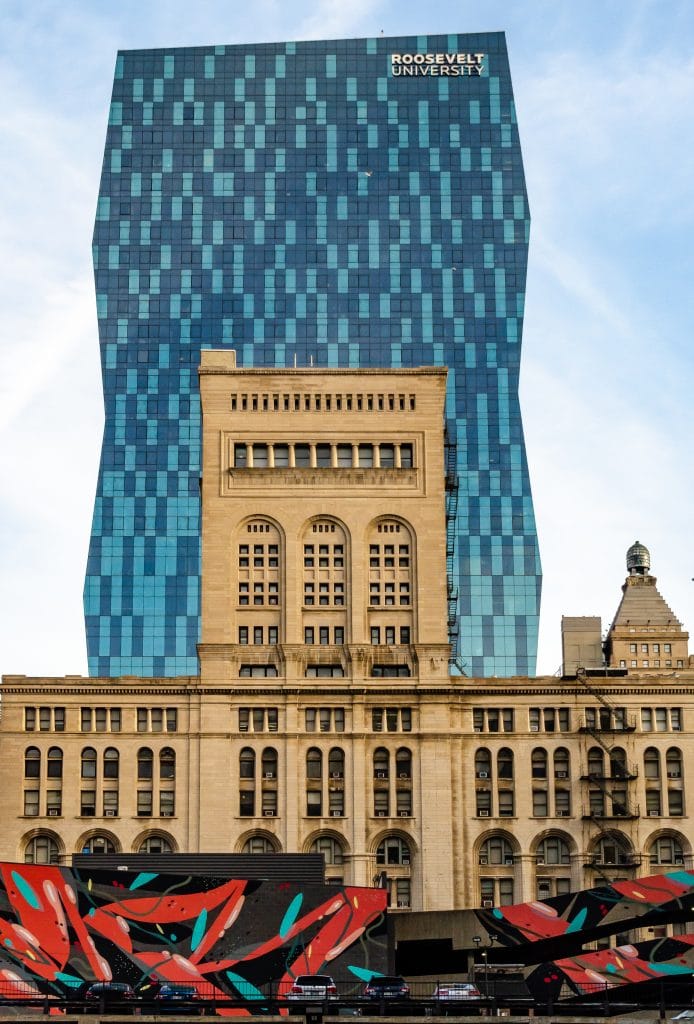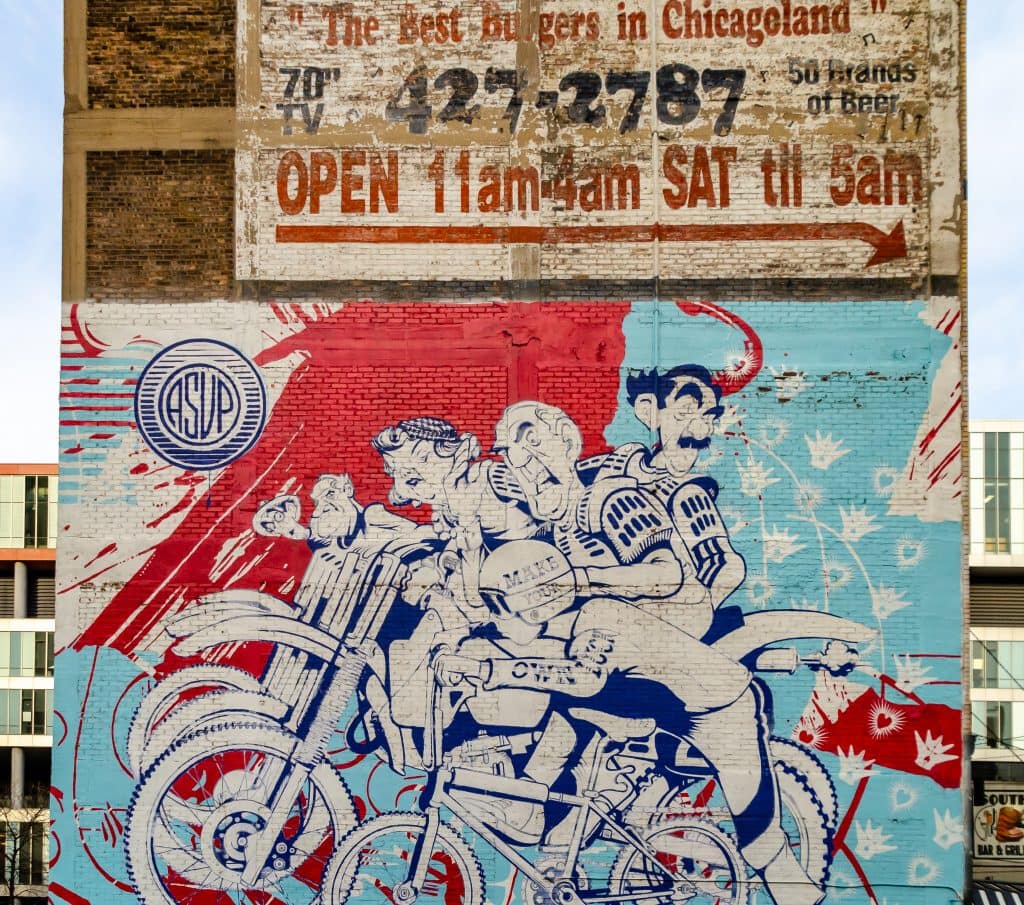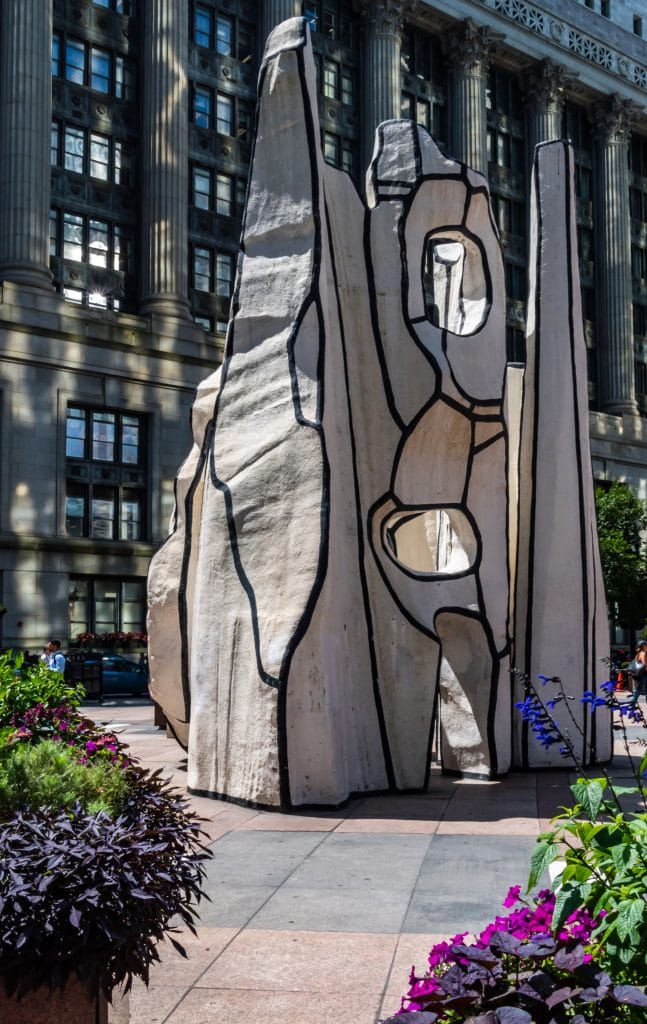Last Updated on 02/24/22 by Rose Palmer
Growing up in Chicago I used to spend my teenage summers hanging out along the lakeshore, biking swimming and sunning. Sometimes I would spend my day at one of the many sandy beaches, but more often than not, I would just bike the length of the rocks along the lakefront. Those large limestone blocks were put in place in the early part of the 20th century to prevent erosion but they eventually became a canvas for local want-to-be artists who covered them with cans of spray paint and multi colored paint brushes. This was the Chicago street art of my youth.
Back then, this street art was rough, often impromptu and usually produced clandestinely, though it was no less creative. Sun, water and harsh winters quickly faded one summer’s spray can masterpiece only to be replaced and covered by another until the layers of faded paint blended so that it was nothing more than a collage of mixed up colors. This art was fleeting, ephemeral and was deemed to be an eyesore and a symbol of the tough side of the city rather than its creative side.
Today, the rocks are mostly gone, and the shoreline has been upgraded to a clean, level, multi use lakefront trail. The lakeshore graffiti may be a thing of the past, but Chicago has become a mecca for street art in all sorts of other permutations.
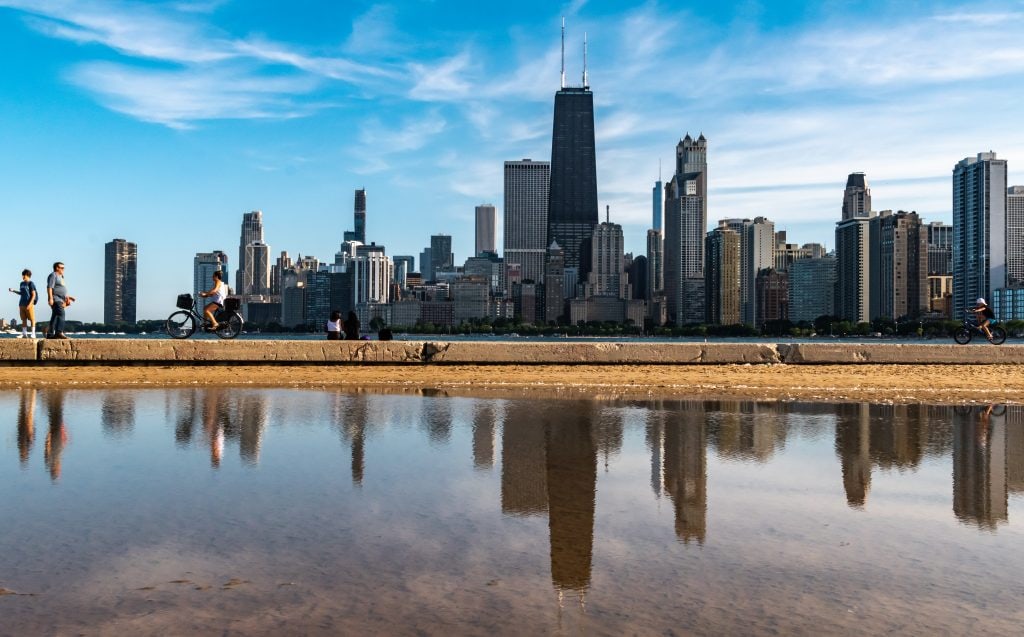
This is a city that now allocates a percentage of the construction budget of new public buildings to the acquisition of public art. So, when I visit the windy city today, I am thrilled to find sculptures, murals and all manner of creative displays throughout every neighborhood that I explore.
Murals in Chicago
The cans of spray paint have been upgraded from producing block letters on the rocks along Lake Michigan to painting large and elaborate murals that grace the blank walls in many of the city’s neighborhoods. For the tourist, the easiest place to see some of the best Chicago street art is in the South Loop along Wabash Avenue. (This map will help you find them).
To give you a taste of what you’ll see, here is some of my favorite wall art that I discovered along the Wabash Arts Corridor.
Just wander the streets around Columbia College and you are bound to find some of your own favorite murals. Columbia College has a unique curriculum that offers programs in the fine and performing arts as well as media arts, so it is not surprising to find so much interesting wall art in the neighborhood that surrounds it. In fact, the Wabash Arts Corridor is a campaign led by the college to beautify the blank walls in Downtown Chicago.
If you only see one mural in Chicago, then go to the intersections of State and Washington streets, across from the old Marshall Fields flagship department store (now Macy’s) and just down the street from the iconic Chicago Theater. Here you’ll see a 100 foot larger-than-life homage by Brazilian artist Euardo Kobra to Muddy Waters, a longtime legend on the Chicago Blues scene.
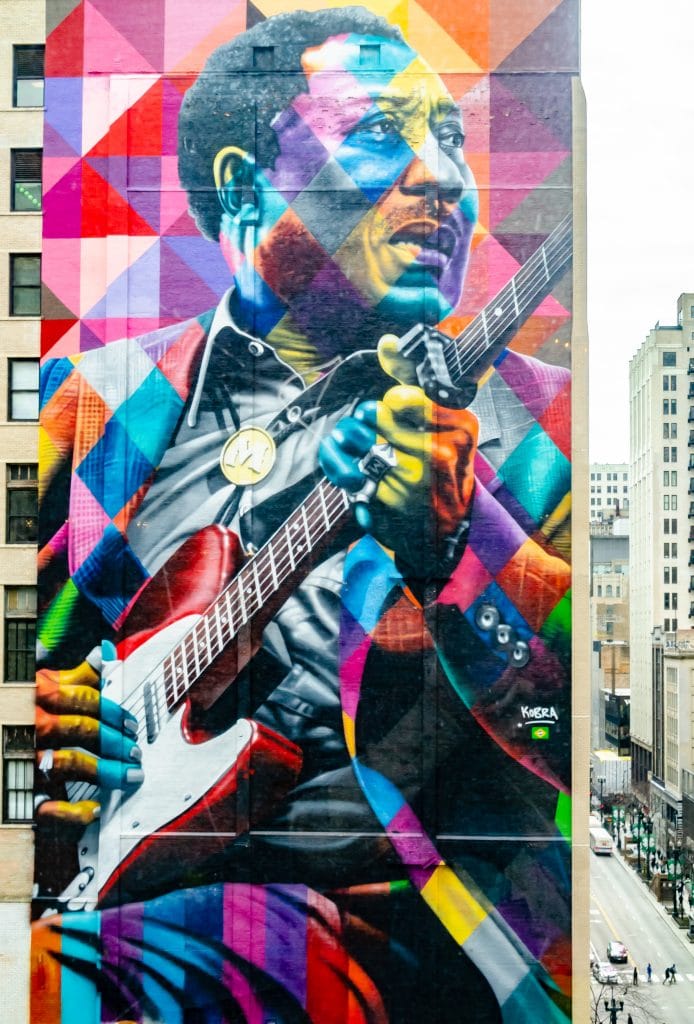
Chicago Public Art
Besides murals, Chicago also has a growing gallery of large outdoor public art displays and sculptures. There are the traditional historic figures and the classic fountains, but you can also see works by some of the most famous modern artists of our time. Many can be found in the Loop area not far from the city’s major tourist destinations.
What I really like about much of this public art is that this is not the “look but don’t touch” type behind ropes or plexiglass. It is meant to be sat on, walked through, strolled under and interacted with.
The modern public art movement started in Chicago in 1967 when Pablo Picasso donated his now famous sculpture to the city. Simply known as “The Picasso”, this 50 foot tall landmark has become one of the defining art pieces for the city. This is an example of cubism, though Picasso never explained what his sculpture actually represents and left its interpretation to our imaginations.
Located at 50 N. Washington St.
Nearby, and looking like a cross between a sculpture, a puzzle, and black and white graffiti is Jean Dubuffet’s “Monument to Standing Beasts”. Depending on the angle and direction from which this is viewed, it has been identified as a standing animal, a tree, an architectural form or a portal. Locals, however, have supposedly nick-named it “Snoopy in a Blender”.
Location 100 W. Randolph St.
Another defining Chicago sculpture is “The Flamingo” by Alexander Calder. This bright red open structure is a vibrant foil for the solid black steel and glass buildings that surround it, especially on a drab and rainy day.
Located at 50 W. Adams St.
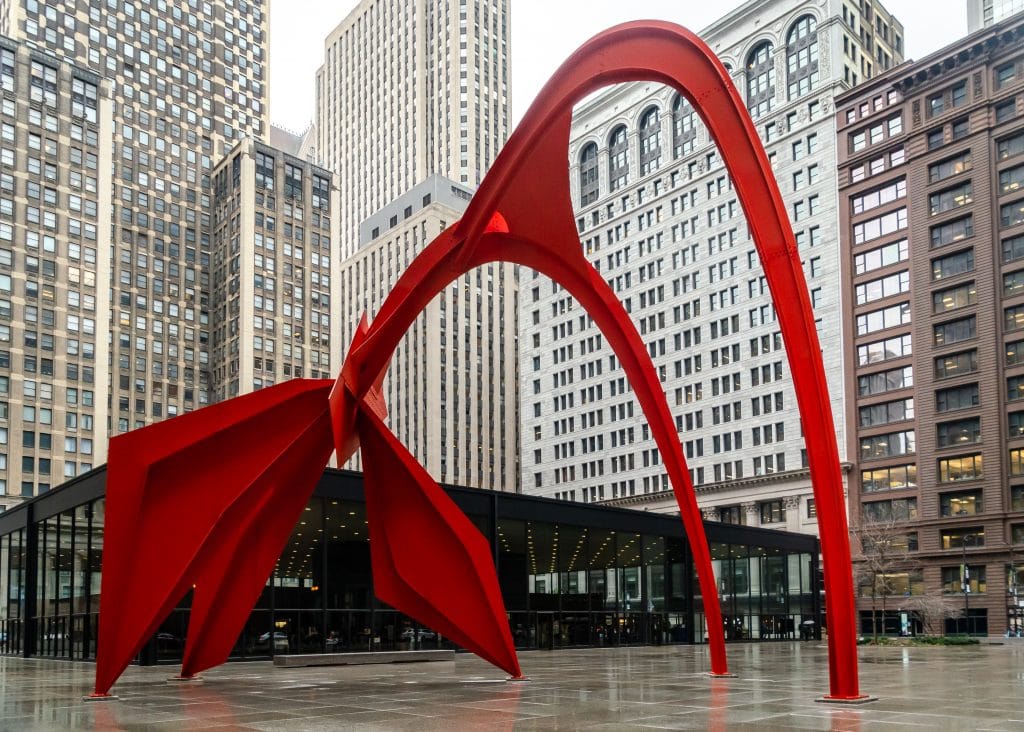

Those that love exuberant expressions of color (like me) will want to find the large piece by modernist Marc Chagall. In his “Four Seasons” mural, which represents the stages of human life set within six different Chicago scenes, he used thousands of mosaic chips in 250 different colors.
Located at 10 S. Dearborn St.


A walk along Dearborn Street from Randolph St. south to Jackson St. will allow you to easily find all these art works.
Millennium Park
Just a few blocks east of the Wabash Arts Corridor and Dearborn St. is Millennium Park which has become Chicago’s top tourist destination. The big draw here is the Cloud Gate sculpture, or “The Bean” as it is often called, which has come to symbolize Chicago more than any other structure in this city.
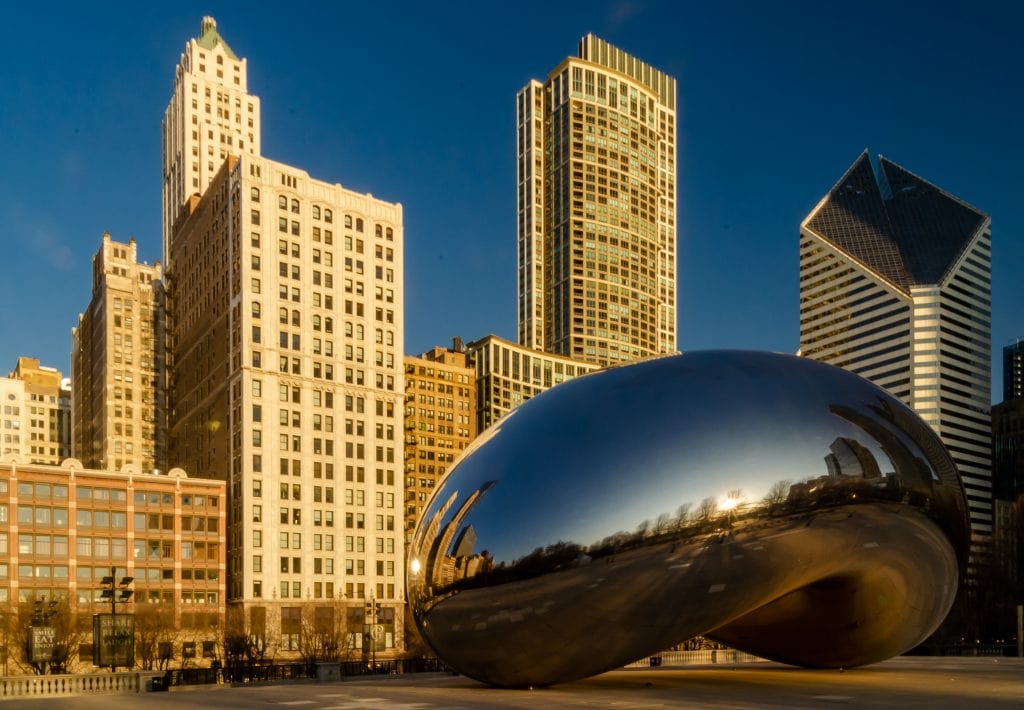


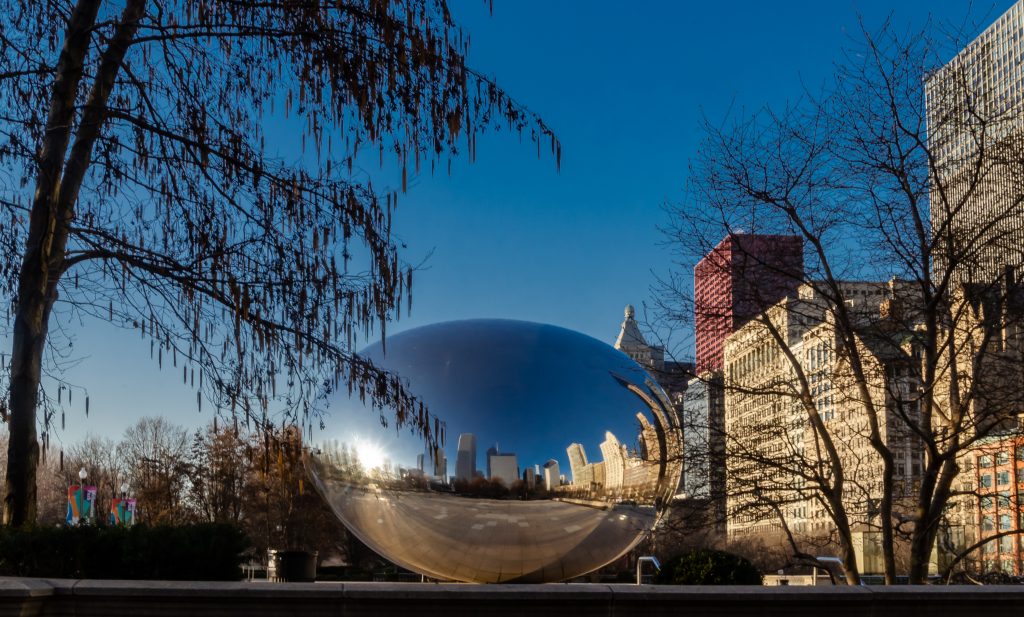
While The Bean is the most famous public art piece here, all of Millennium Park is actually a showcase for a variety of art, architecture and landscape designs, all of which engages the visitor to be part of the space and not just be an observer.
Next door to The Bean is the Jay Pritzker Pavilion, an outdoor bandshell where architecture and the performing arts have fused into a world renowned space that is both music for the soul and art for the eyes. One of the best things about this space is that you can enjoy concerts at the pavilion for free each summer during the Grant Park Music Festival.

Another unique piece of interactive public art in Millennium Park is The Crown Fountain which uses video technology and LED lit blocks to display faces with water spouting out of the mouth. The sculpture illustrates and embraces the diversity that is Chicago’s population and uses the images of Chicago residents from all walks of life.

During the hot summer months, the Crown Fountain becomes a fun venue for children and families to cool off.
While exploring Millennium Park, be sure to also check out the Lurie Garden which is the world’s largest green roof, the serpentine BP Pedestrian Bridge, and the Boeing Galleries which showcase unique exhibits throughout the year.
Millennium Park anchors the northern most point of a mile long green space along the lakeshore which also includes the ultimate art destination – the Chicago Art Institute. At the southern end you’ll find Grant Park and Chicago’s museum campus which includes the Field Museum of Natural History, the Adler Planetarium and the Shedd Aquarium. You’ll also find the modern sculpture “Agora” by Polish artist Magdalena Abakanowicz.
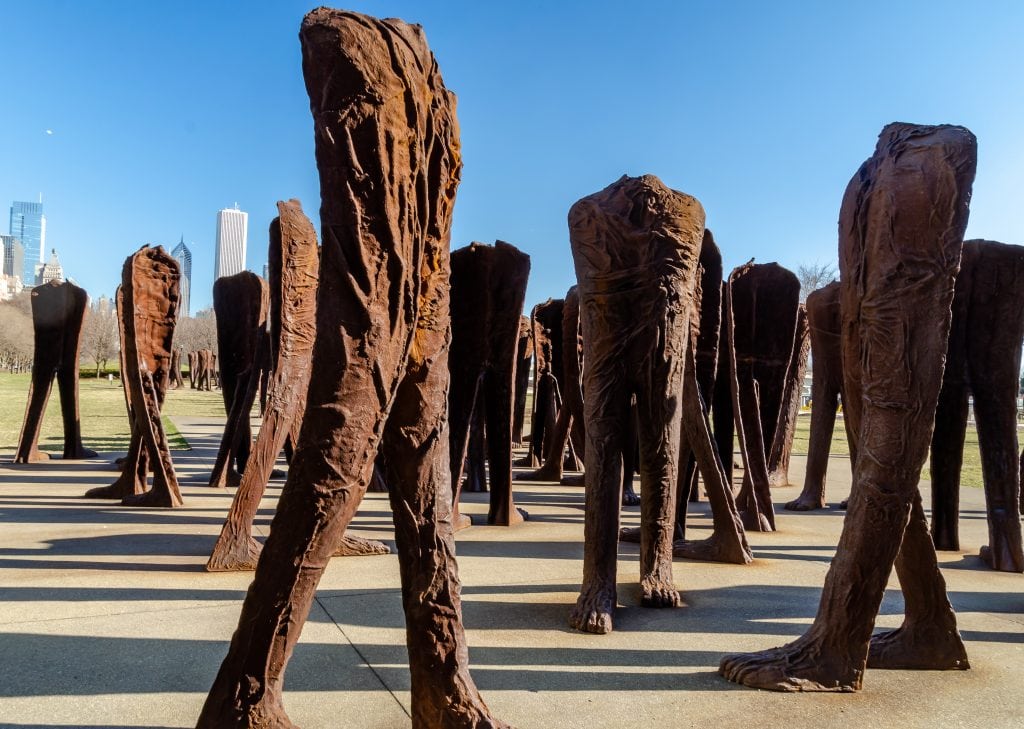
In Greek, agora means village meeting place and this sculpture is a collection of 106 headless and armless 9 foot tall iron bodies that are congregating together. The artist grew up during World War II and uses her fear of crowds and their mindless actions as inspiration for her works.
Chihuly in Chicago
As a huge fan of the work by master glass artist Dale Chihuly, I could not leave the city without seeing the permanent Chihuly installation at the Garfield Park Conservatory. This botanical garden under glass is an easy train or Uber ride from downtown and is well worth a visit.
The first of Chihuly’s garden series was displayed here in 2001, titled “Chihuly in the Park: A Garden of Glass”. The Persian Lilly Pads which were displayed at this exhibition have been purchased by the Garfield Park Conservatory and are now on permanent display.


I know there is a lot more street and public art in Chicago that I have yet to discover on future visits. The beauty of this is that whether you are looking to visit Chicago on a budget or are just looking to encounter Chicago’s creative side, a scavenger hunt to find Chicago’s public art is also a great way to experience the heart and soul of my favorite city.
Other related posts you may enjoy:
Things to do in Chicago: Oh My! There is So Much To Do On a Chicago 4 Day Itinerary
How to visit Chicago on a budget: Chicago on a Budget – A Winter Weekend Break in My Favorite City
Discover scenic southern Illinois: There’s a Little Bit of Paradise in the Garden of the Gods Illinois
See the artsy side of Indianapolis: Discovering Artistic Indianapolis – My Favorite Things to Do in Indy
Thanks for visiting.
Rose
Pin This!






